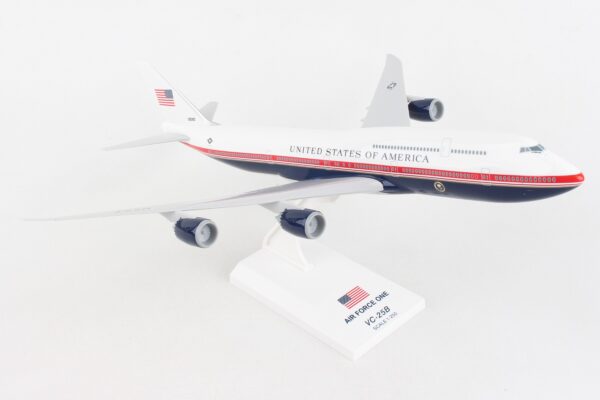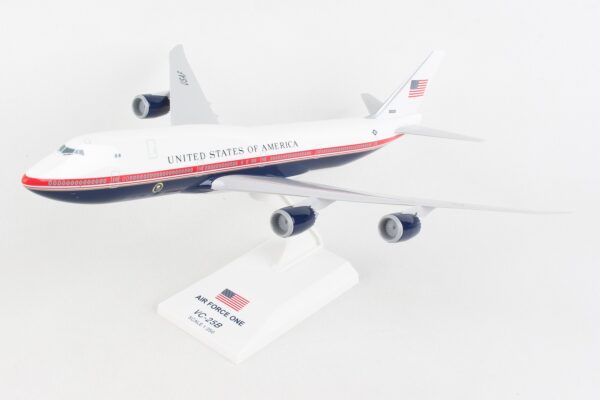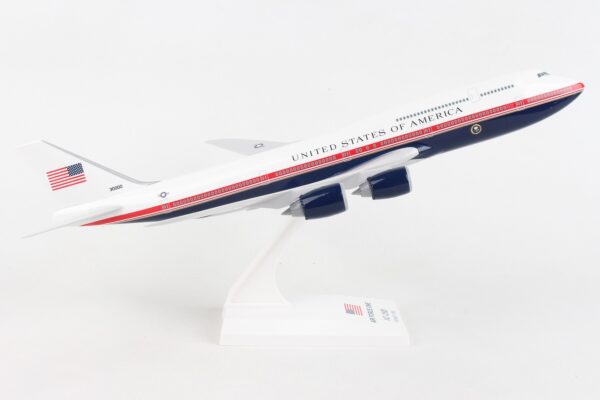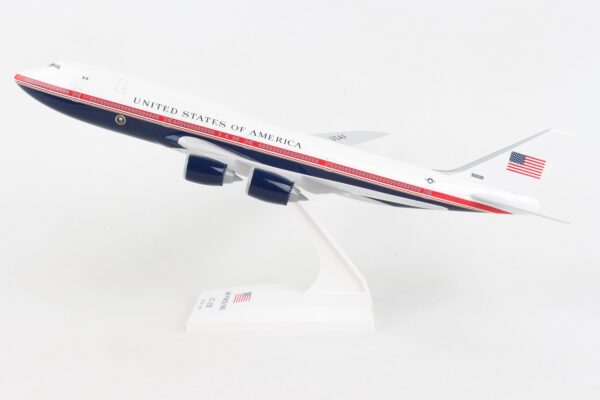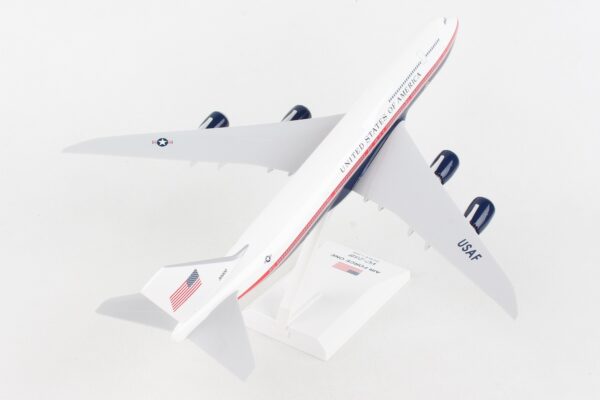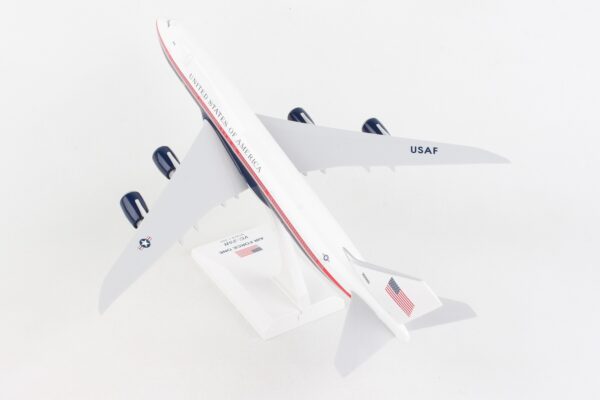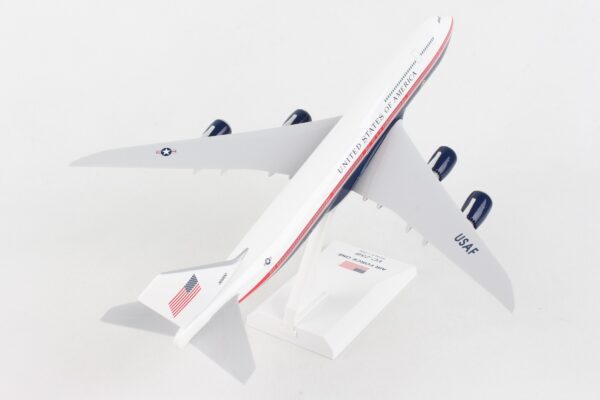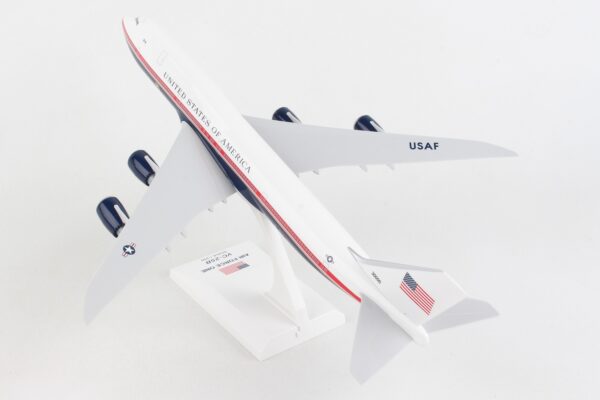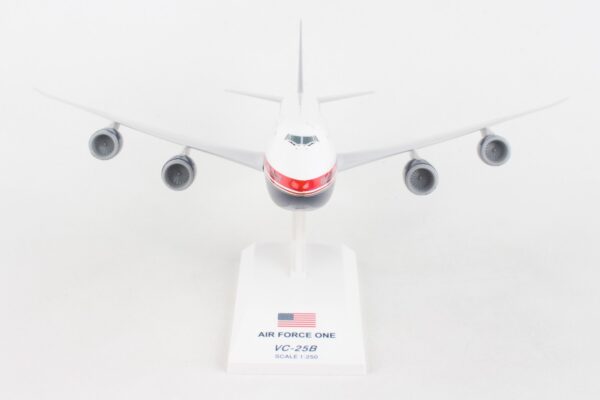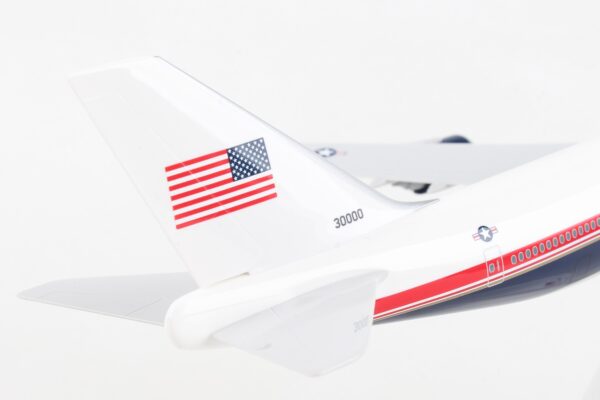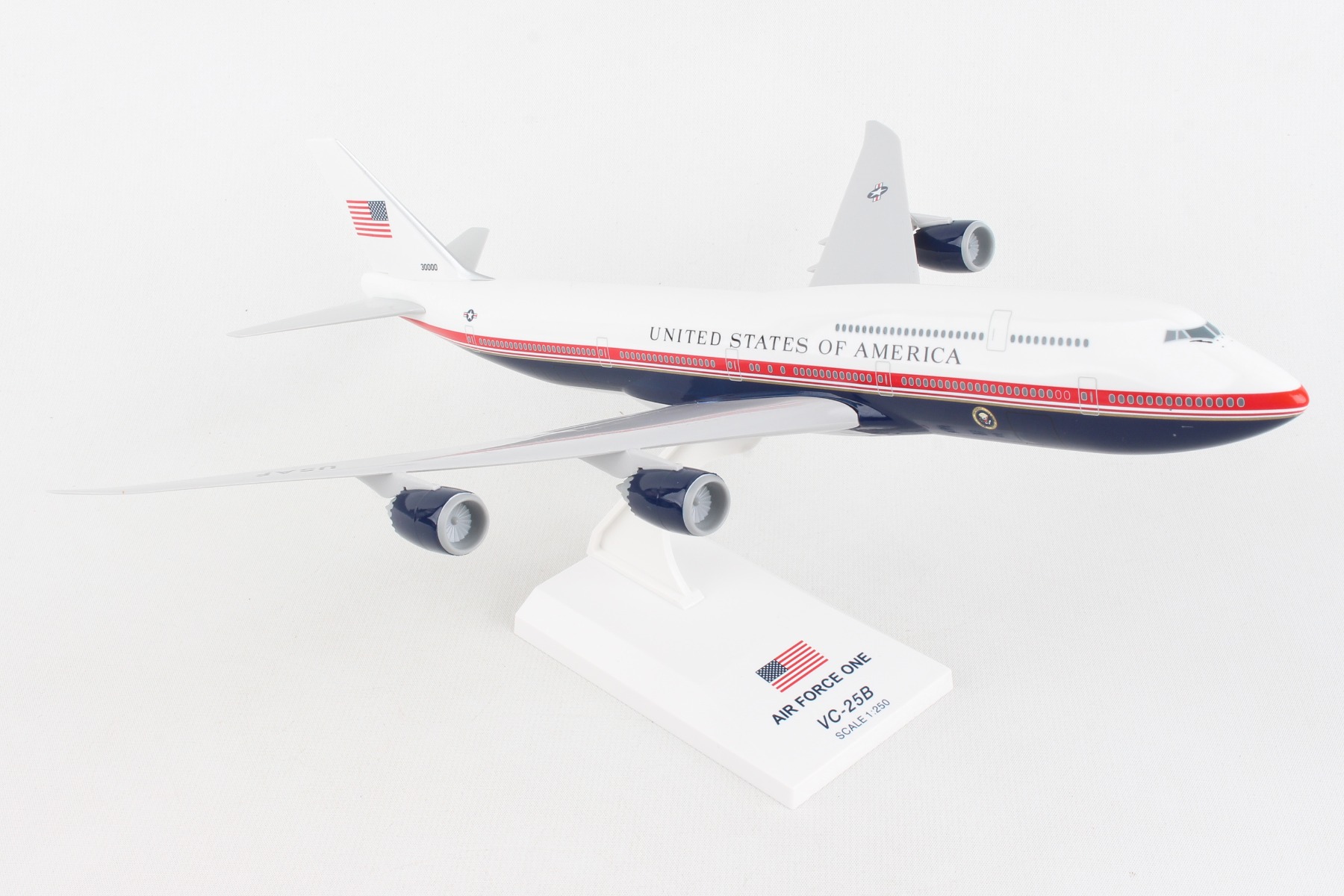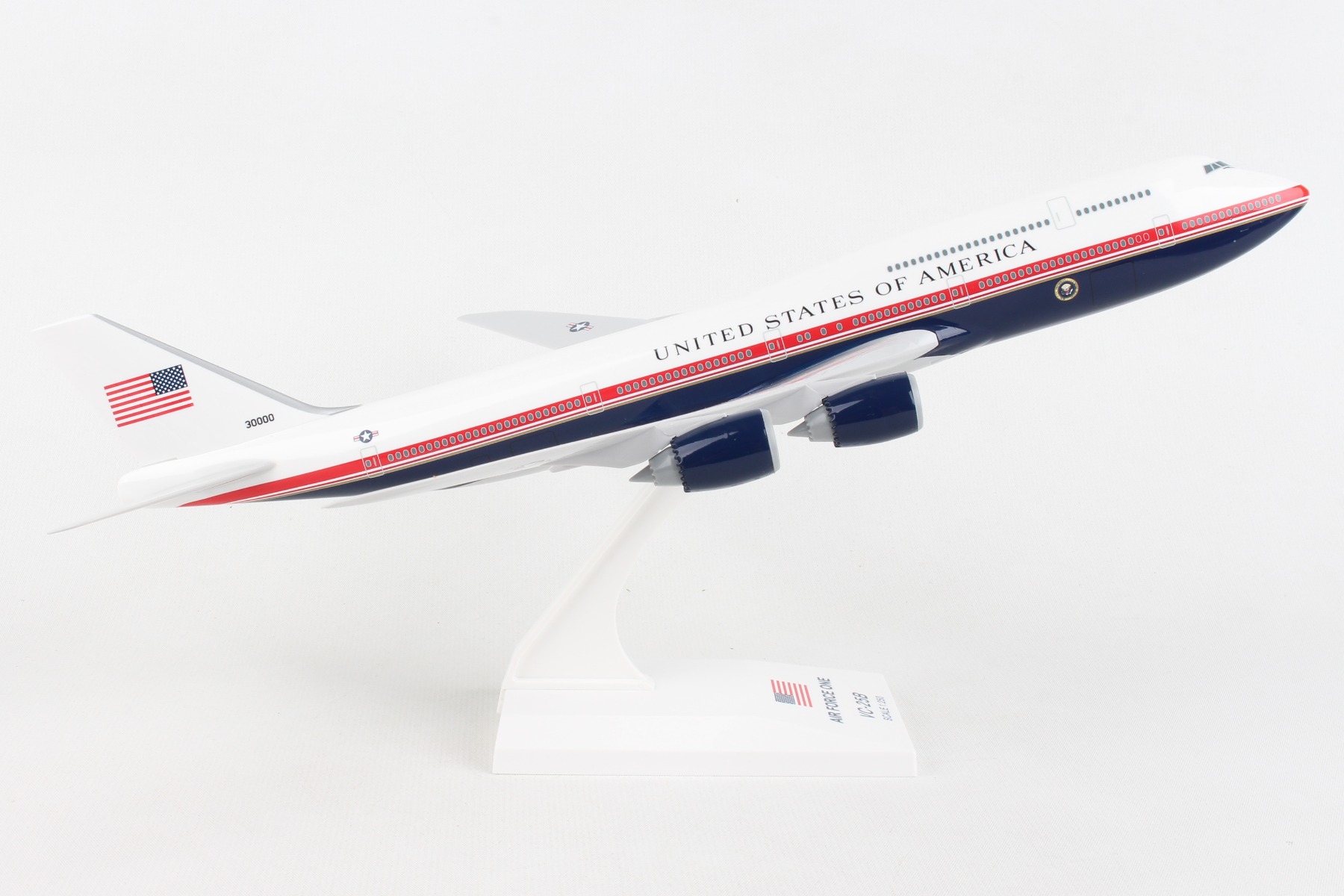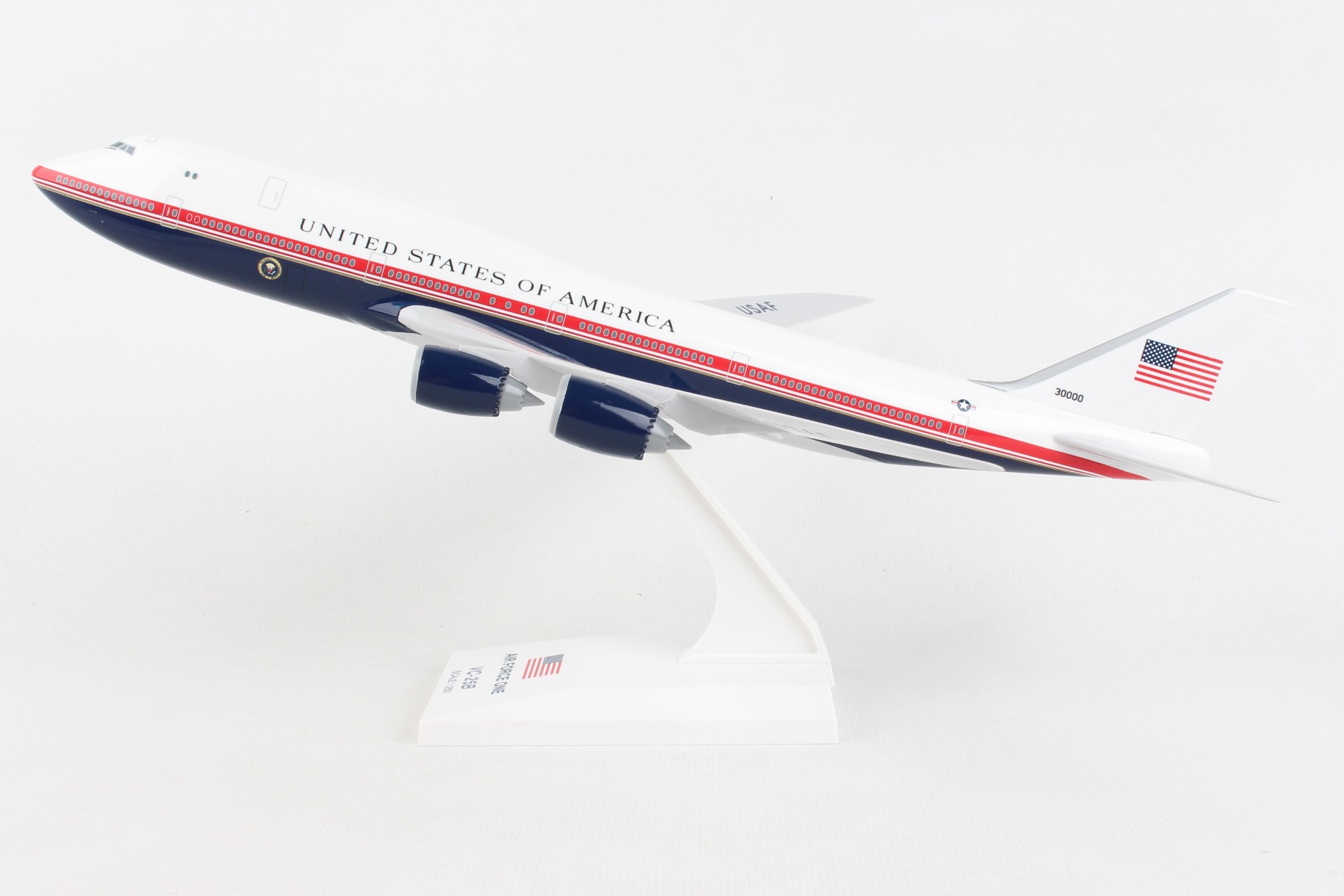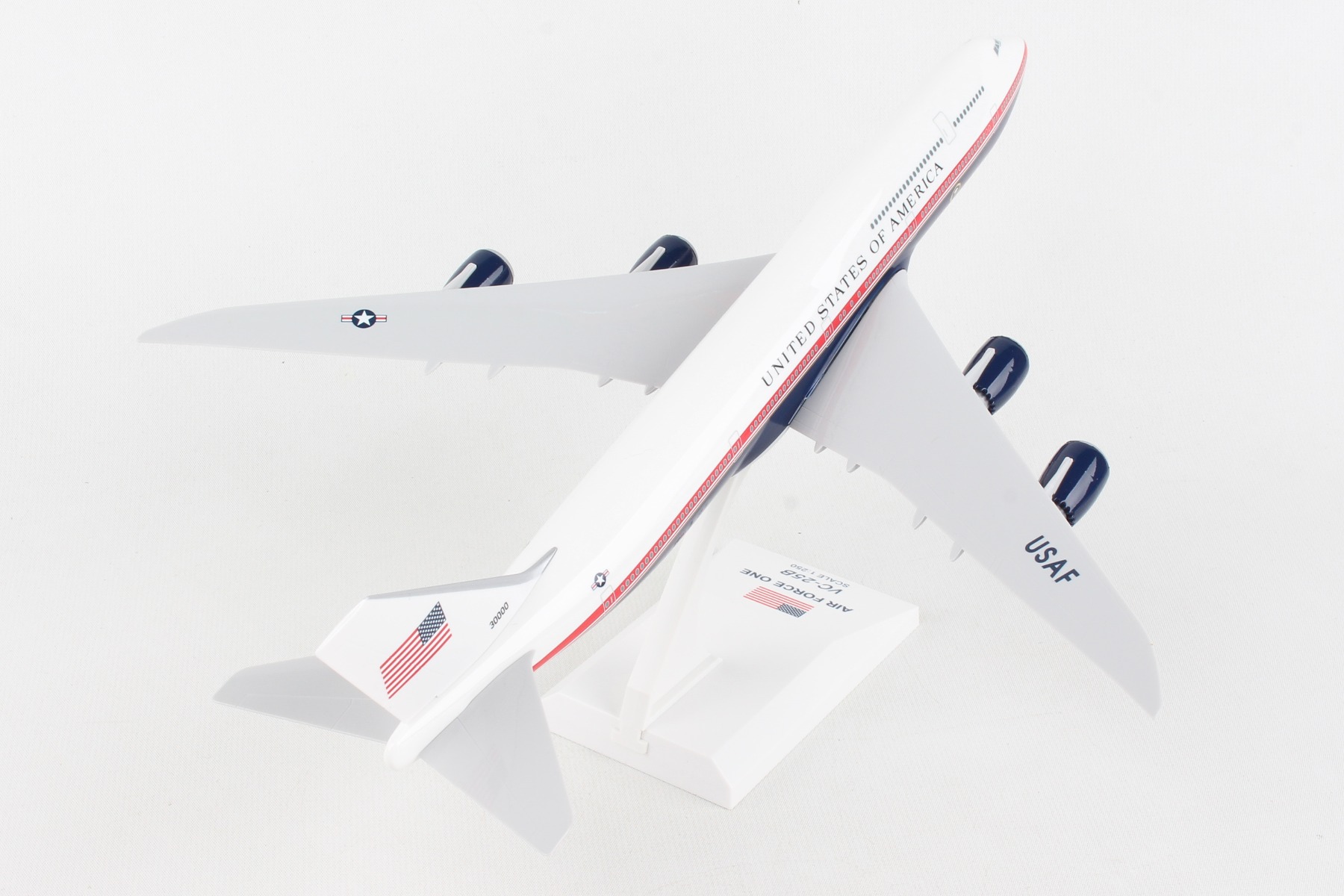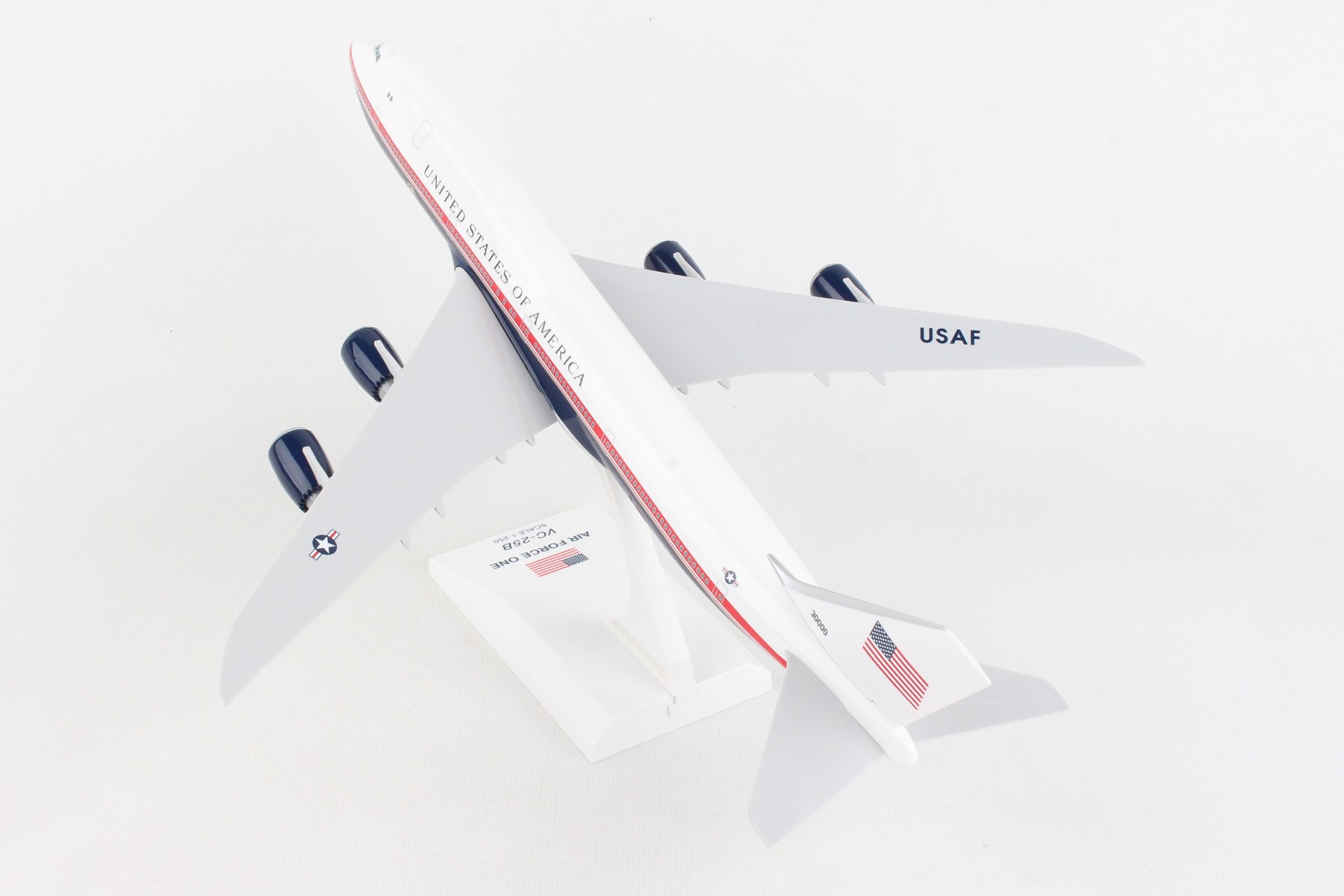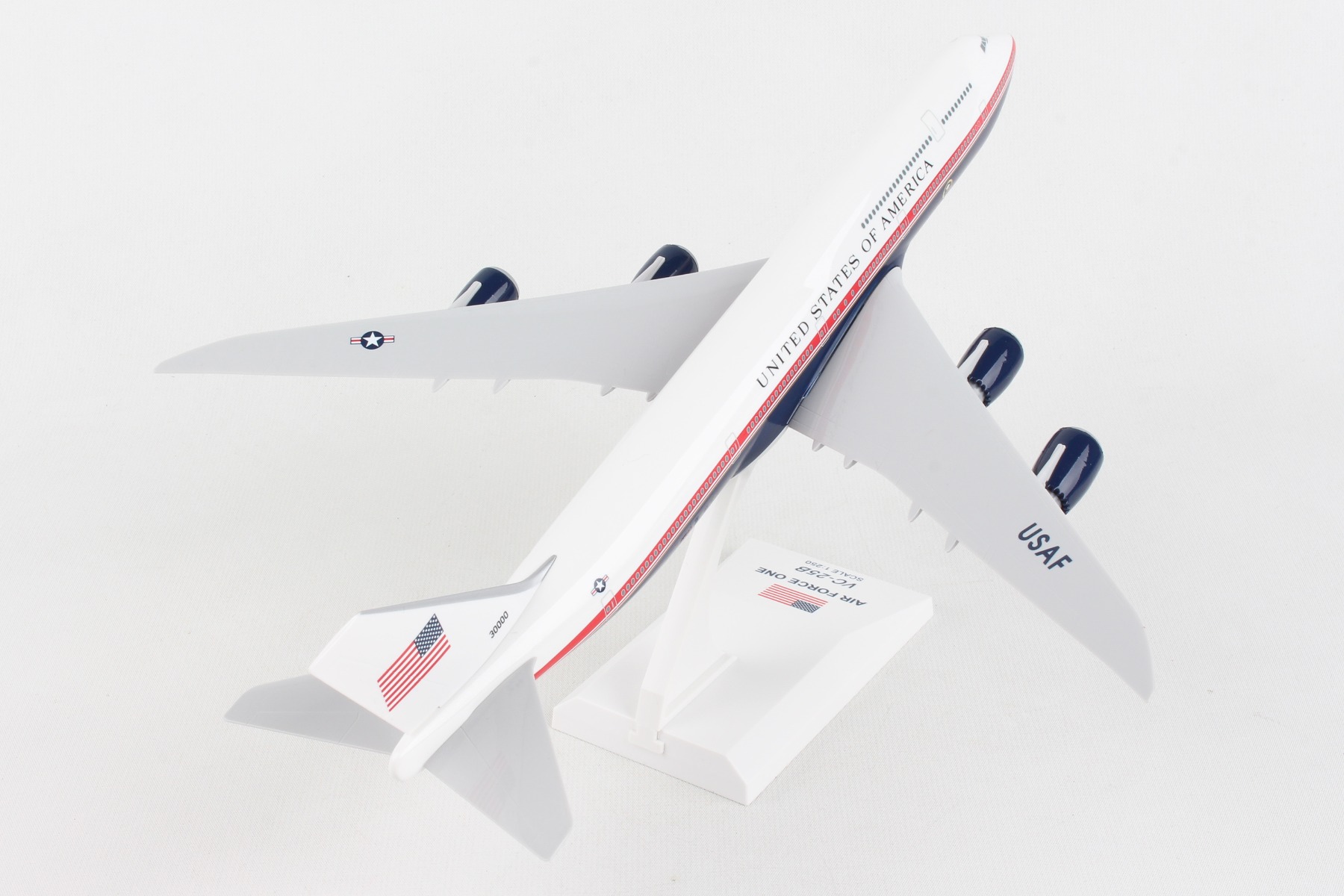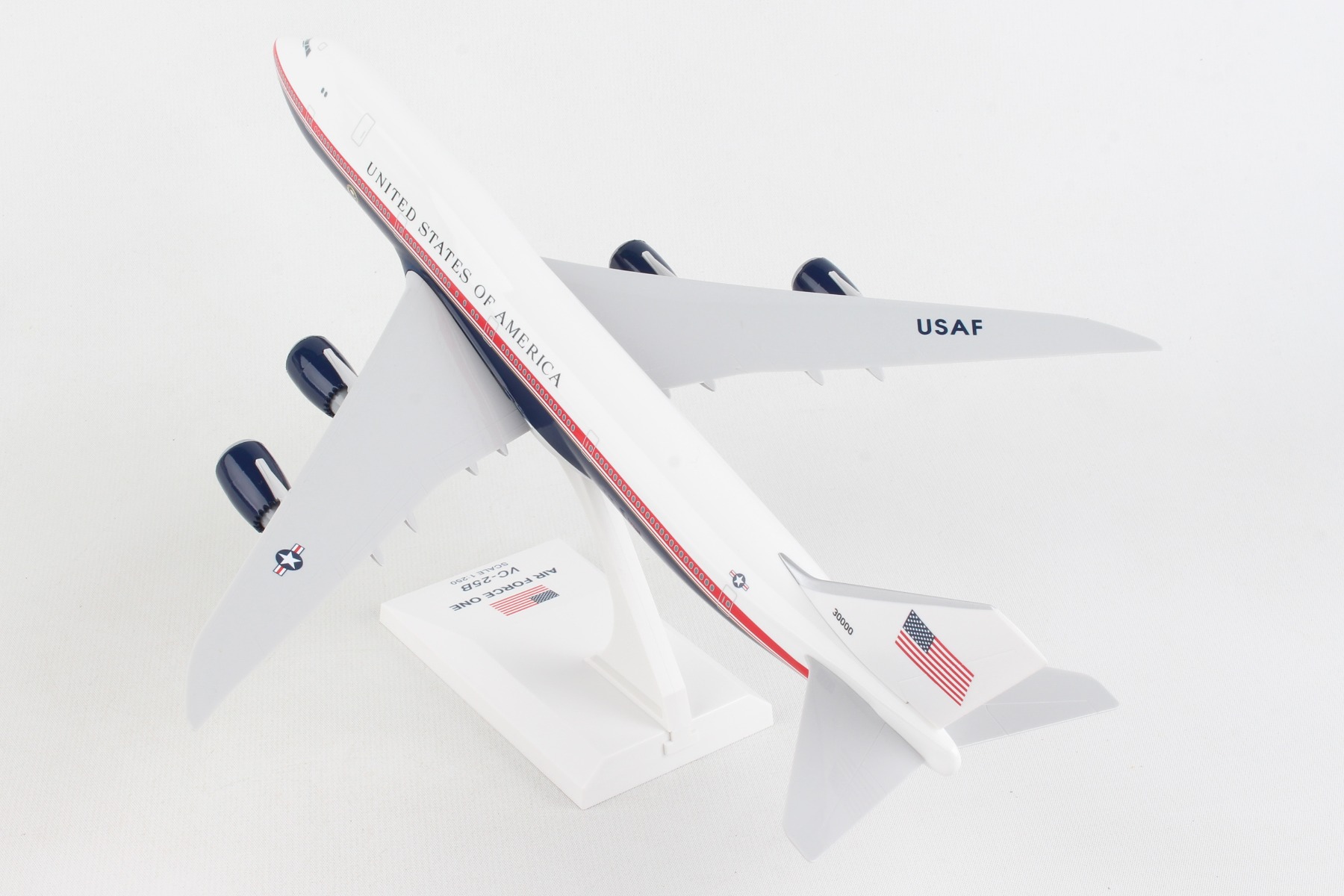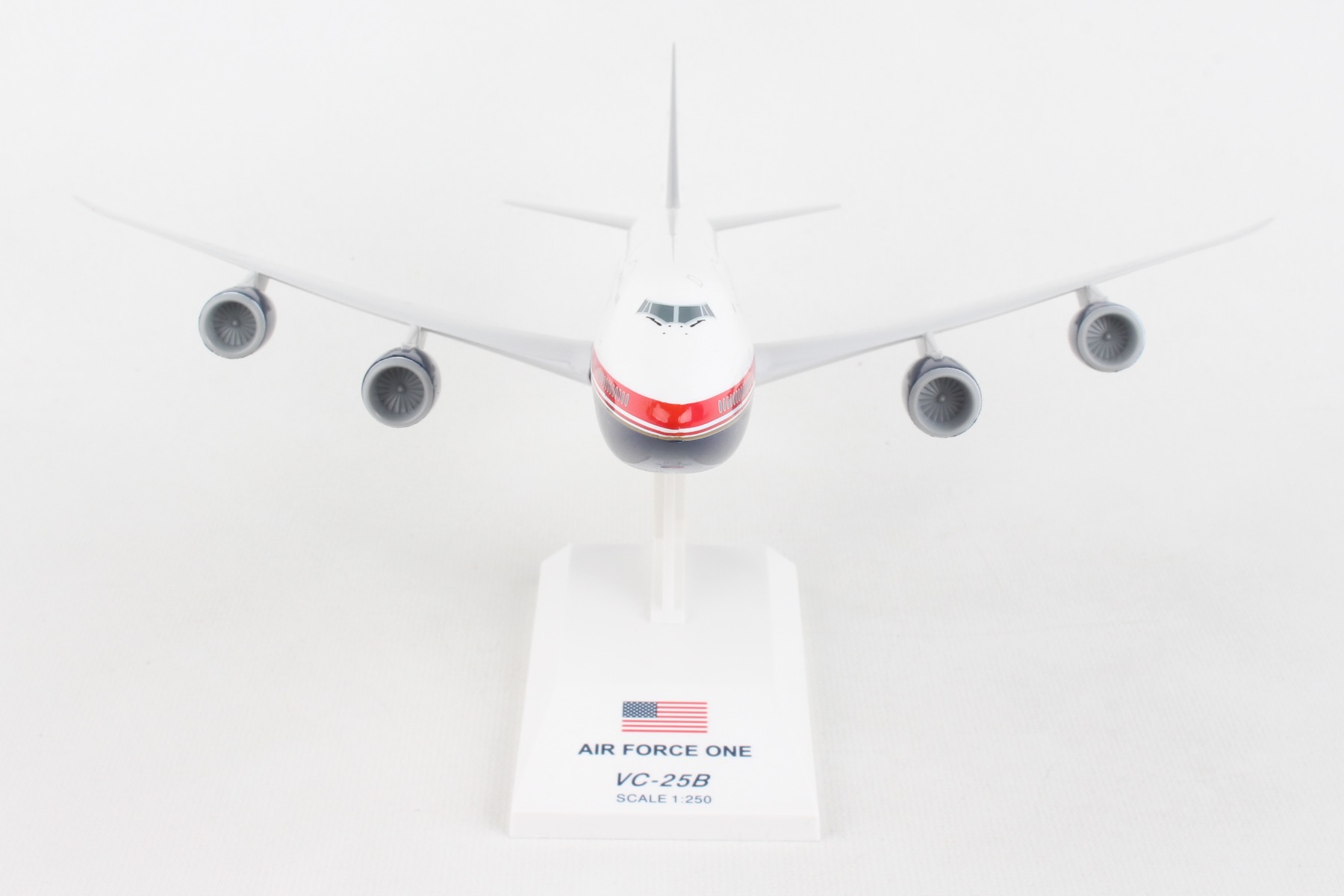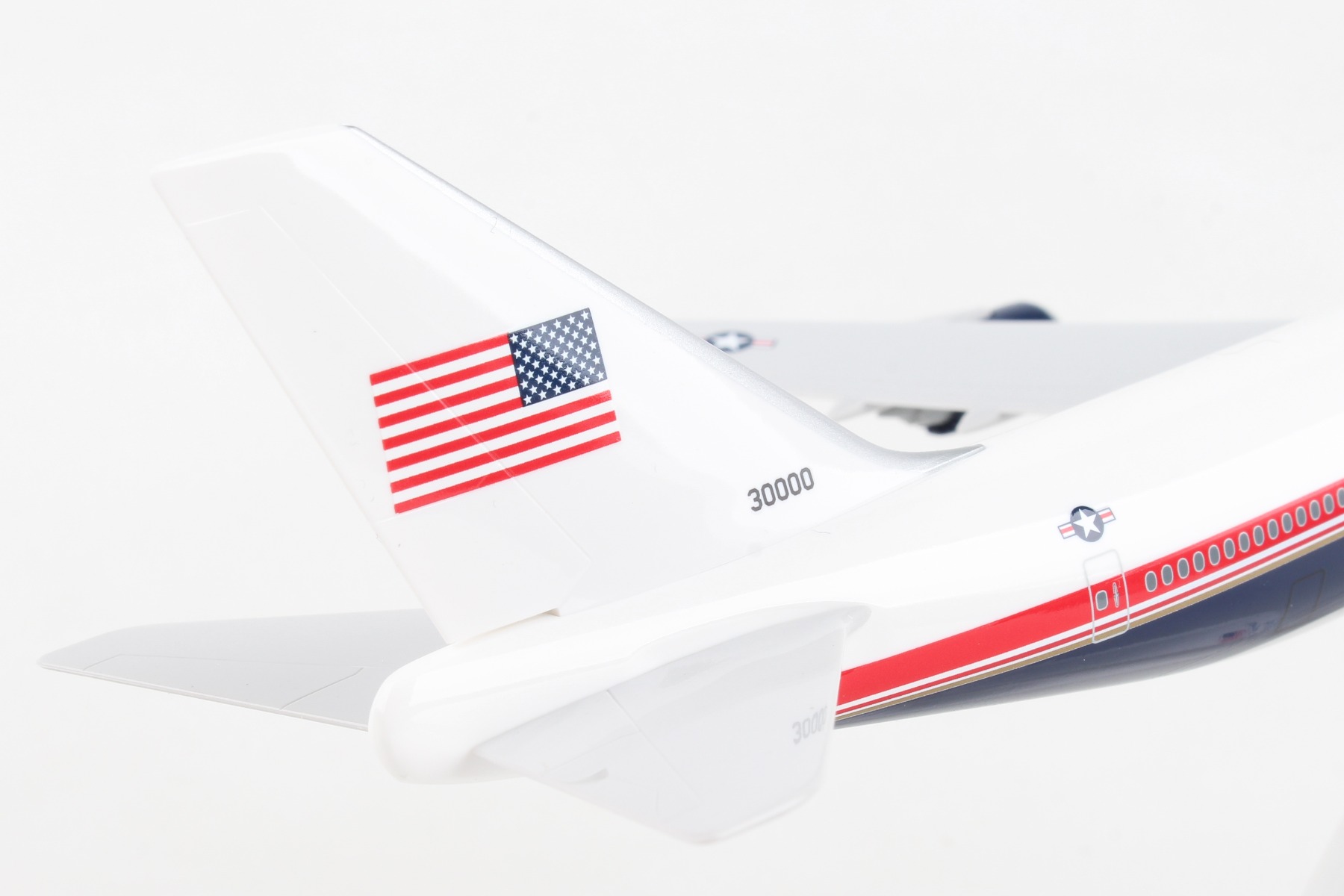SKYMARKS AIR FORCE ONE 747-8 1/250 (VC25B) #30000
SKYMARKS AIR FORCE ONE 747-8 1/250 (VC25B) #30000
Comprising superior quality, solid, substantial injection molded plastic components with a simple snap-fit design that allows for easy assembly without the need for glue, this SkyMarks 1/250 scale Air Force One Boeing 747-8i - Registration 30000 - measures approximately 12-inches long with a 10-7/8-inch wingspan and comes complete with a Display Stand. An accurate, true-to-scale reproduction of the actual aircraft, the model is great for collectors and features authentic, highly detailed graphics and markings. Easily discernible from earlier 747 models by its prominently curved aerodynamic wings with raked back wingtips and chevrons on its engine nacelles, the Boeing 747-8i was initially introduced in 2005 as a larger, quieter and more advanced and fuel-efficient variant of its predecessor, the Boeing 747-400, and utilizes the same cockpit and engine technology as its sibling, the Boeing 787, which is acknowledged by the suffix, 8i after 747 (747-8i), with the "i" representative of "Intercontinental." Designed to carry more than 400 passengers approximately 8,000 nautical miles in a 3-class configuration, the Boeing 747-8i is also offered in a freighter variant with a noticeably shorter upper deck, called the 747-8f, which is furnished with a hinged opening nose door and side door, and boasts a greater payload capacity than its predecessor, the Boeing 747-400ERF, from which it was derived. While the Boeing 747-8f was delivered to launch customer Cargolux in late 2011, the first passenger version of the Boeing 747-8i was delivered to launch customer Lufthansa in mid-2012. Prior to launch customers Cargolux and Lufthansa having taken delivery of their Boeing 747-8s, the USAF sought to replace its VC-25A Air Force One aircraft for presidential transport, two aging, heavily modified Boeing 747-200Bs that it put into service in the late 1980s. The USAF ultimately selected the Boeing 747-8 for the role in early 2015, as they deemed it to be "The only aircraft manufactured in the United States [that] when fully missionized meets the necessary capabilities established to execute the presidential support mission." In a fortuitous cost savings move, the USAF purchased two undelivered 747-8i aircraft in August 2017 from the bankrupt Russian airline, Transaero, and has begun installing the necessary telecommunications and security equipment required on the new 747-8 presidential aircraft, designated VC-25B. Interestingly, the large, quad-engine Boeing 747 was initially conceived in the mid-1960s, when supersonic transports were also concurrently on the drawing board, and viewed more favorably at the time as the likely successor for the future travel, Boeing engineers and Pan Am CEO, Juan Trippe opted for the Boeing 747 to be designed so that it could be readily converted into a freighter if required by merely retrofitting the fixed nose of the existing passenger aircraft with a large hinged cargo door. Consequently, if a passenger 747 aircraft were ever to be adapted as a cargo plane with a hinged cargo door, it would be much more cost effective and considerably easier to convert existing passenger aircraft into cargo aircraft if the cockpit were located above the nose, thus enabling the existing passenger 747s to continue flying as transformed cargo planes. Even though supersonic transports did not readily materialize for the most part, and did not supersede the Boeing 747 as initially envisioned, over the course of time, the Boeing 747 was not only embraced as a successful passenger and cargo aircraft, many passenger Boeing 747 aircraft were ultimately converted into cargo 747 aircraft, known as BCF - Boeing Converted Freighter(s) when it was no longer viable that they continue to be used as passenger aircraft.
